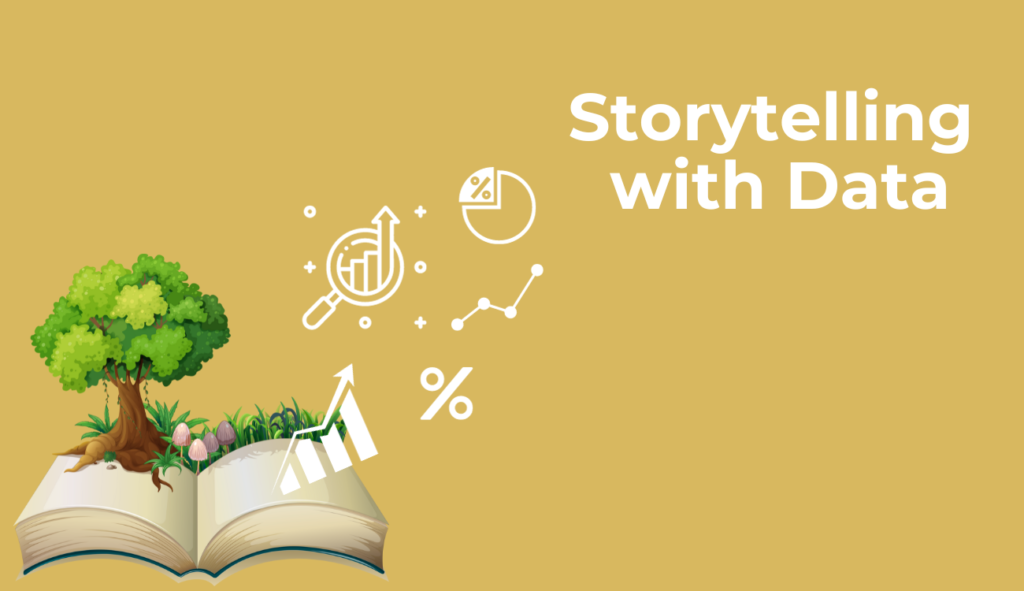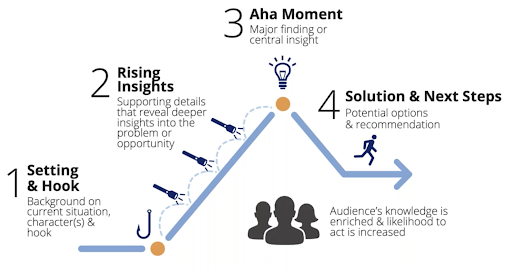
Subscribe here to receive The Storyteller’s Playbook
Data storytelling isn’t about presenting financial results to the board of a company, yes it can be used for that. But its primary use is to convey an engaging story using data, in such a compelling way that everyone reaches a similar conclusion.
This piece walks you through a step by step of building a story with data.

5 Tricks Execs Can Learn from Authors
The beauty of figures is that they break through the chaos of over-information with numbers and quantifiable patterns.
The only problem is that data is boring, but when you construct a narrative around it, you can communicate far more effectively a challenge and its solution.
Here’s how authors do it:
1- Keep the end in mind
Start by asking yourself the conclusion you want readers to reach and how. With this in mind, you can better select the data that will contribute meaningfully to your story.
2- Killing your darlings
Focus and linear wins when it comes to constructing narratives. It’s important to remove all figures and information that doesn’t add significant value to the primary conclusion you’re trying to make.
This doesn’t mean ignoring data that disagrees with your point. There’s a difference between telling a story and being intentionally biased towards a goal.
3- Make it personal
You know your audience, build a story that triggers them emotionally. A situation they can relate to. That’s why it’s important to build a story with a specific person in mind, in order to fine-tune it (read the full article to find out why).
4- Spice it up
Bestselling authors know how to keep their audience on the edge of their seats. They use tension, suspense, and anticipation to build interest in their stories.
To achieve this in data-led stories, the trick is to incorporate a conflict, an evil that you need to protect the business from, or a consequence if the desired result isn’t met.
5- Show don’t tell
Paint a picture, instead of: Competition is rising fast and will overtake us in 6 months.
Aim for: Company XYZ expanded their promotion with billboards on every main street in 6 new cities. They also activated an online campaign targeting households, and now you can see their brand in 48% of kitchens.
